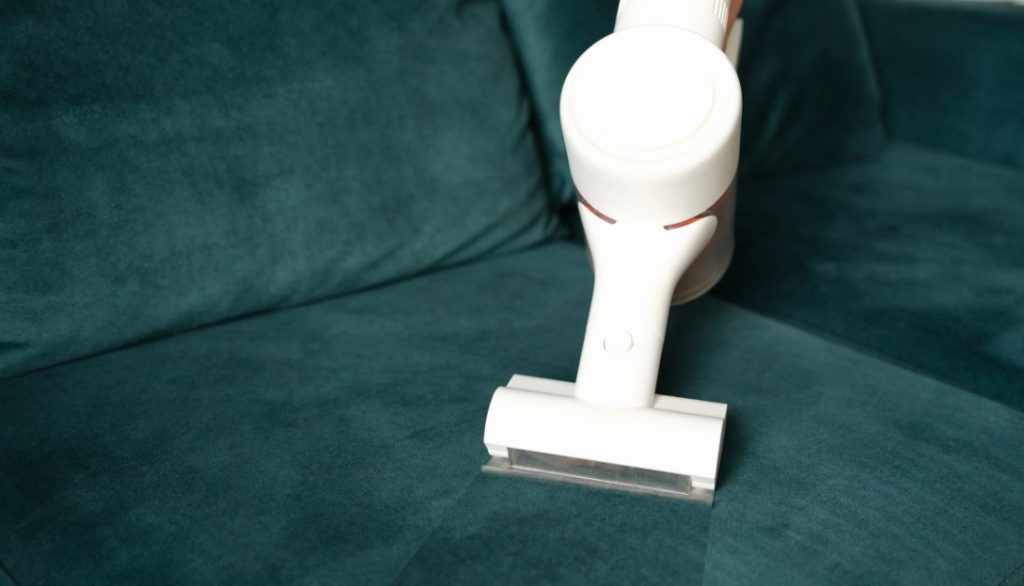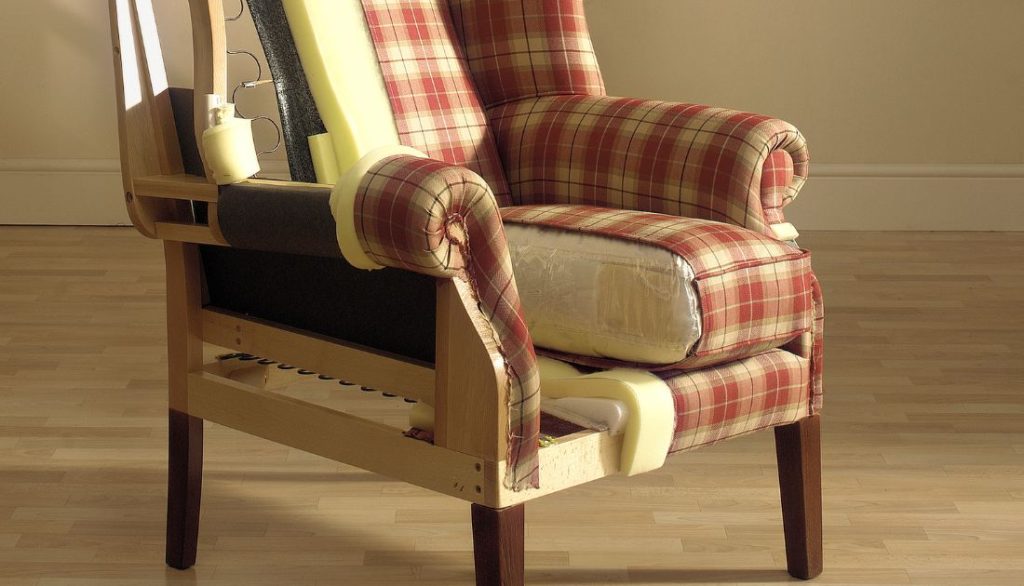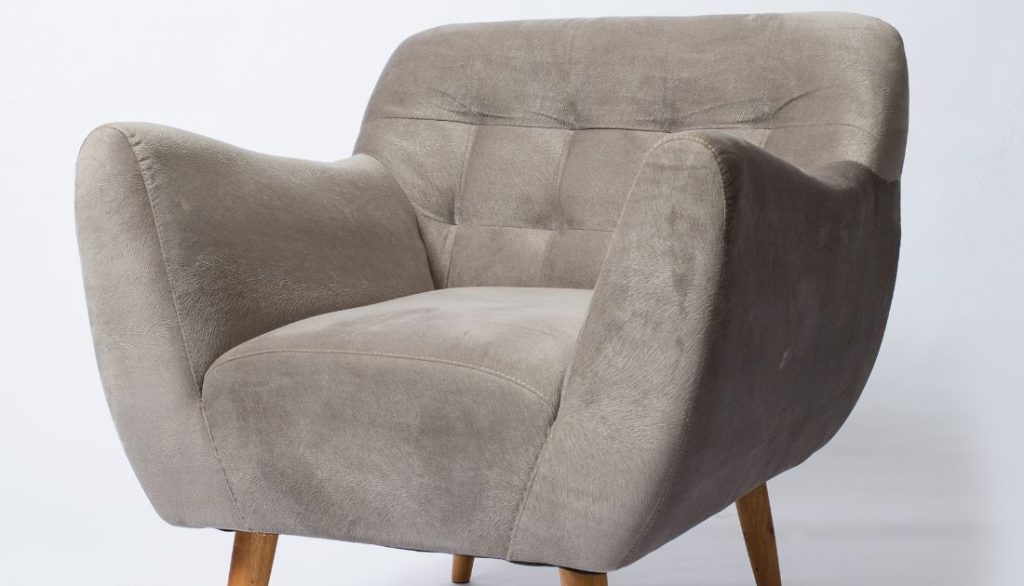Table of Contents
Upholstering furniture is an art that can completely transform the look and feel of a space. From worn-out chairs to outdated sofas, reupholstering can breathe new life into your furniture pieces and revitalize your entire room. The process involves selecting fabrics, patterns, and textures that enhance the piece’s aesthetic appeal and provide comfort and durability.
Upholstered furniture refers to pieces of furniture covered in fabric, leather, or other materials. This covering gives the furniture its soft and comfortable feel, making it ideal for seating and lounging. Upholstery can be found on sofas, chairs, ottomans, and headboards.
The uniqueness of upholstered furniture lies in its ability to add a touch of elegance and warmth to any space. The variety of fabrics and materials available allows for endless customization options, making it easy to match your furniture with your existing decor. Upholstered pieces can be easily refreshed or updated by changing out the fabric, giving you the freedom to transform your space whenever you desire.
A quick look at the history of upholstery.
Ancient Beginnings: Upholstery has a rich history dating back to ancient Egypt, where elaborate thrones and chairs were adorned with luxurious fabrics and cushions. The Greeks and Romans also utilized upholstery techniques, incorporating ornate designs into their furniture.
Medieval Influence: Upholstery became more widespread in Europe during the Middle Ages as tapestries and textiles were used to decorate furniture for added comfort. This period marked a shift towards more intricate patterns and designs in upholstery.
Industrial Revolution: The 19th century brought about significant changes in the world of upholstery with the Industrial Revolution. Mass production made affordable upholstered furniture accessible to a wider audience, transforming interior design practices. Today, modern trends continue to evolve while drawing inspiration from centuries-old techniques and styles.

Why upholstered furniture is a good choice.
- It adds comfort and warmth to any space.
- It provides endless design possibilities with a wide range of fabric options.
- It offers longevity and durability when properly maintained.
- Upholstered furniture enhances a room’s aesthetic appeal and creates a cozy atmosphere that invites relaxation and socialization.
- The soft padding and fabric covering of upholstered pieces such as sofas, chairs, and ottomans offer tactile comfort, making them perfect for lounging or entertaining guests.
- Additionally, the variety of fabrics available allows for customization to suit any style preference or color scheme.
Tips on how to choose the right fabric.
When selecting fabric for upholstering furniture, consider the piece’s durability and function. Choose a heavy-duty fabric like canvas or twill for high-traffic areas while opting for silk or velvet in low-traffic spaces.
Factors to consider when choosing upholstery fabric:
Durability: Look for fabrics with high rub counts (15,000+ double rubs) for longevity.
Color and pattern: Select a color that complements your existing decor and a pattern that enhances the space.
Texture: Consider the feel of the fabric against your skin and how it will complement other textures in the room.
By considering these factors, you can ensure that your newly upholstered furniture looks great and stands up to daily wear and tear.
Recommendations for durable and easy-to-clean fabrics.
Opt for fabrics like microfiber, leather, or vinyl for durability.
Look for fabrics with a high rub count to withstand wear and tear.
Choose dark colors or patterns to hide stains and spills better.
When selecting upholstery fabric, prioritize functionality over aesthetics. Remember that easy maintenance is key to preserving the beauty of your furniture.
How much does it usually cost to reupholster furniture?
The cost of reupholstering furniture can vary depending on the size, style, and fabric chosen. On average, reupholstering a sofa can range between $400 and $4,500. Dining chairs typically cost between $300 and $1,000.
Rejuvenating your space with reupholstered furniture can be a worthwhile investment. Remember that the quality of materials and craftsmanship will impact the overall cost.
Consider obtaining quotes from multiple upholsterers to compare prices and services before deciding. Remember that higher costs may indicate better quality workmanship and materials.

Discussing whether reupholstering is a good investment.
When considering whether reupholstering your furniture is a good investment, weighing the costs against the benefits is essential. Oftentimes, re-upholstering can be more economical than purchasing new furniture. By opting for re-upholstery, you can breathe new life into your existing pieces while preserving their sentimental value.
Reupholstering allows you to customize your furniture to suit your style and preferences. Instead of settling for mass-produced options, you can choose fabrics and designs that reflect your personality.
This personal touch enhances the aesthetics of your space and adds a unique charm that cannot be replicated with store-bought items. Ultimately, investing in reupholstering can revitalize your space and elevate its overall appeal for years to come.
Step-by-Step Guide to Reupholstering
What You Need
To reupholster furniture, you’ll need a variety of tools and materials.
Essential items include a staple gun, upholstery tacks, scissors, measuring tape, and a screwdriver. You’ll also need fabric, foam padding, and possibly batting, depending on the condition of your furniture. A seam ripper can help remove old fabric, while a sewing machine might be necessary for creating seams and edges.
Make sure to have a clean, spacious work area to spread out your materials and tools, which will help you stay organized and make the re-upholstering process smoother and more efficient.
Choose Your Fabric Carefully
Selecting the right upholstery fabric is crucial for a successful reupholstering project. When choosing your fabric, consider durability, texture, and ease of cleaning.
Tough, stain-resistant fabrics like microfiber or leather might benefit high-traffic areas or homes with kids and pets. Think about the color and pattern, ensuring they match your existing decor.
Test fabric samples at home to see how they look in your lighting. Remember, the right fabric enhances the beauty of your furniture and ensures its longevity and functionality.
Remove the Old Fabric
Removing the old fabric from your furniture requires patience and care. Start by turning the piece upside down or on its side to access the staples or tacks holding the fabric.
Use a staple remover or a flathead screwdriver to carefully pry these out, working slowly to avoid damaging the frame or padding.
As you remove each section, keep track of the pieces, as you may use them as templates for cutting the new fabric. This step can be time-consuming but is essential for a smooth re-upholstering process.

Clean the Furniture
Before applying new fabric, thoroughly clean your furniture to remove dust, dirt, and old adhesive. Use a vacuum with an upholstery attachment to clean the frame and any exposed padding.
A damp cloth with a mild cleaner can remove grime from wooden parts. If you notice any mildew or mold, treat it with an appropriate cleaner and let it dry completely.
Ensuring your furniture is clean and free of contaminants will help the new fabric adhere better and extend the life of your reupholstered piece.
Cut the New Fabric
Accurate measuring and cutting of your new fabric are crucial steps in reupholstering. Lay the old fabric pieces you removed over the new fabric, using them as templates.
Add an extra inch around the edges for seam allowance and adjustments. Mark the measurements with fabric chalk or a pencil, then use sharp scissors to cut precisely along the lines.
Take your time with this step to avoid mistakes. Accurate cuts will make fitting and attaching the new fabric much easier and more professional-looking.
Attach the New Fabric
Attaching the new fabric to your furniture is a meticulous process that requires attention to detail. Begin by positioning the fabric over the furniture and smoothing out any wrinkles.
Use a staple gun to secure the fabric, starting from the center and working outwards to ensure even tension. Pull the fabric tight as you staple, but not so tight that it distorts the shape.
For corners and curves, fold the fabric neatly and secure it with additional staples. Trim any excess fabric to ensure a clean and professional finish.
Add Finishing Touches
Adding finishing touches to your reupholstered furniture can significantly improve its appearance. To enhance the design, add decorative elements like trim, piping, or tufting.
Ensure all seams and edges are neat and secure. If your furniture has buttons or other embellishments, reattach or replace them as needed.
Inspect the overall look to ensure the fabric is smooth and evenly attached. These small details can elevate the final look of your project, giving it a polished and professional finish.
Review Your Work
Once you’ve completed reupholstering, take a final, thorough look at your work. Sit on the furniture to test its comfort and check for loose fabric or staples. Ensure all areas are securely attached, and the fabric is smooth and even.
Make any necessary adjustments, such as tightening loose areas or re-stamping sections that aren’t secure. Reviewing your work carefully ensures that your reupholstered furniture is aesthetically pleasing, durable, and functional for everyday use.
